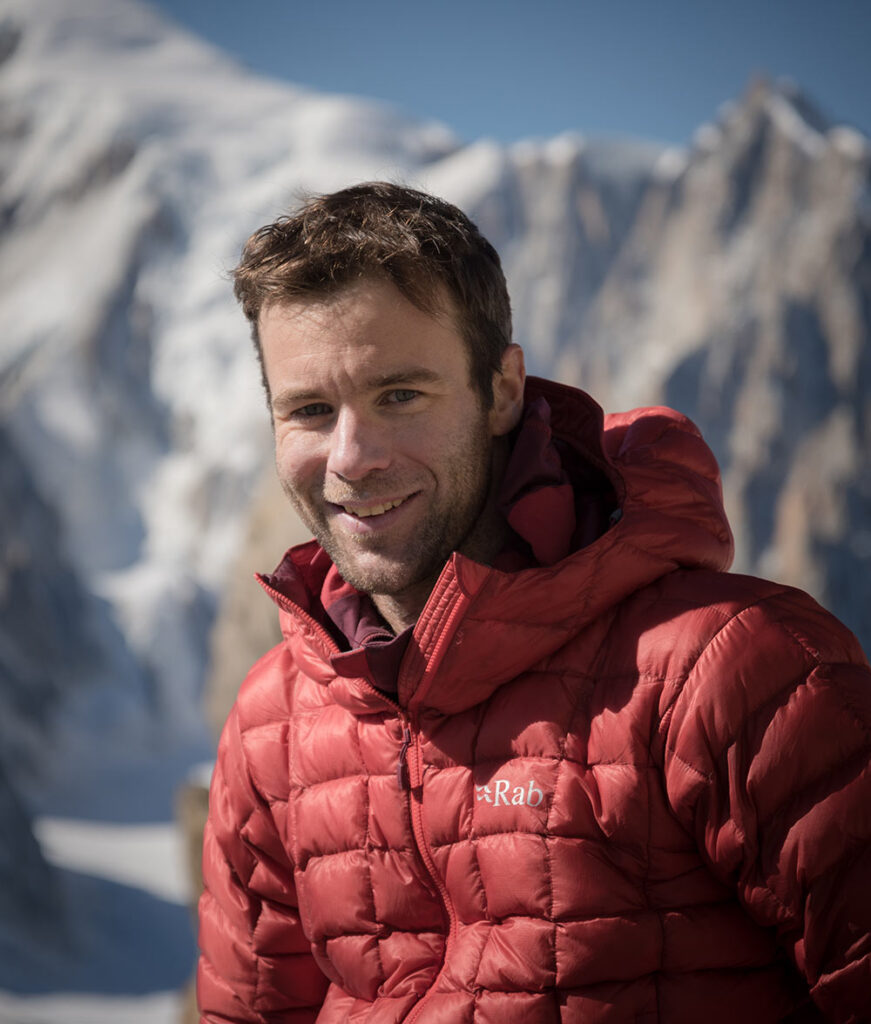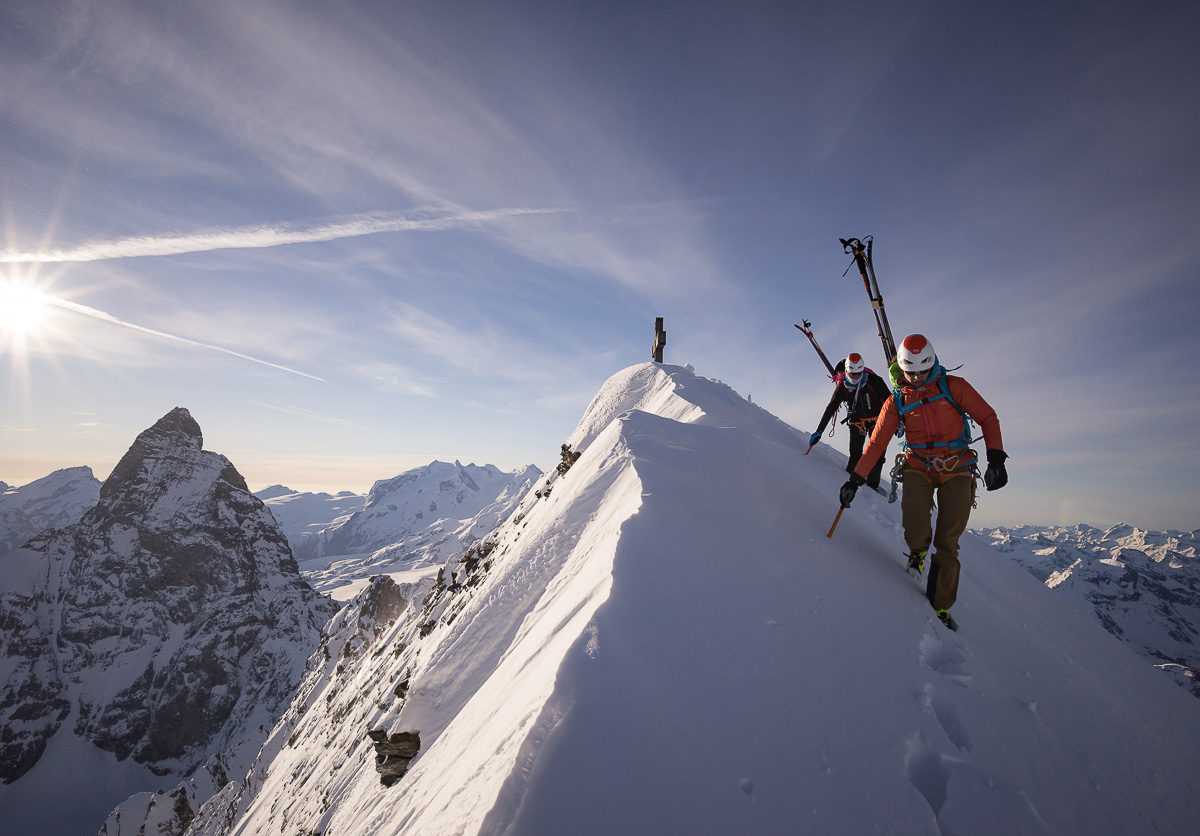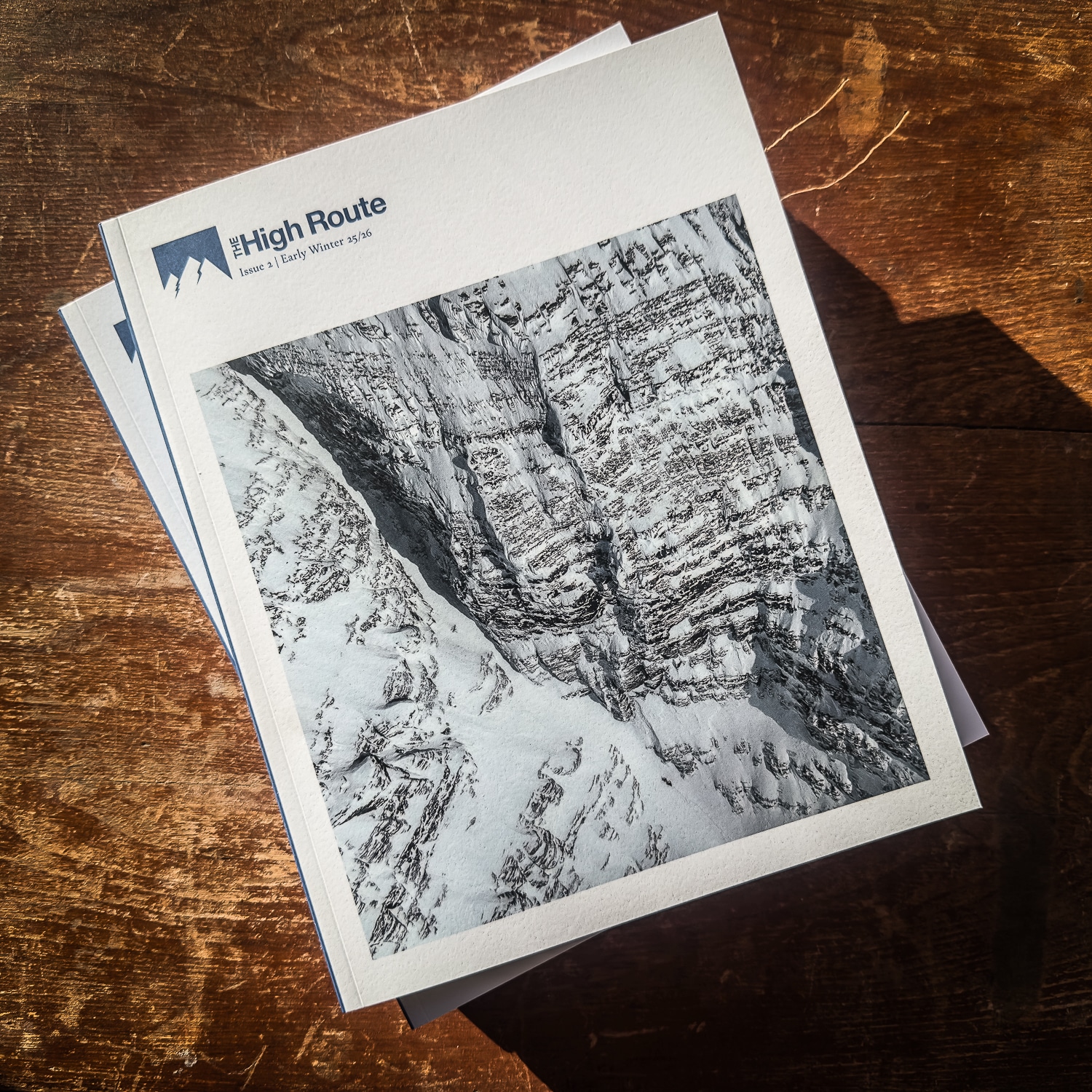Sophie Stuber: Like many people in mountain towns, you’re mixing several different professions to form a sustainable career. Could you talk about your relationship with photography, guiding, mountaineering, and writing?
BT: The balance of how much of each activity I do in any given year shifts. So I work as a guide, but as I’m not a particularly gregarious person, I find meeting new clients every three days quite stressful, whereas working with athletes who I already know, doing photo shoots for brands, or my book projects, that’s what I find most exciting. However, on a cloudy day, you can’t do a shoot. If you’re guiding, you can still get out, give someone a fun day, and pay the bills. So that’s the balance between the different jobs. Guiding is reliable, whereas photography is very inspiring and stimulating.

SS: And how has your work as a photographer evolved, especially in the digital age, to support this side of your career where you find the most inspiration?
BT: The market has shifted radically in the 20 years I’ve been doing this, especially the move from analog to digital, the arrival of social media, and the abundance of cameras and phones. Everyone can take a pretty good photo now. So, being valuable enough to a brand that they want to pay you to do a shoot, you’ve got to be a head above. It was probably easier, I’d say, 12 years ago than it is nowadays. There are so many really good young photographers who are willing to work for very little money because they’re trying to break into the market. It’s actually pretty complicated right now for somebody who’s been in the industry for a while, especially in mountain sports.
SS: Then where do the guidebooks come in?
BT: Over the last couple of decades, I’ve been taking an awful lot of photos of climbing routes and mountaineering adventures. It’s to the point that I’ve got over 500,000 photos in my stock library. I’ve got this massive body of photographic work, and making guidebooks seems like a good way of using this resource of information. At the same time, I want to try to push the bar a bit higher on how beautiful, accurate, and interesting a guidebook can be. I’ve done almost every route in the recent guidebook on the 4000m peaks, which is already kind of unusual for a guidebook, and then I shot all the photos and carefully drew the lines on the photos. This process makes it a very laborious, time-consuming exercise, but it means I’m proud of the end product.






Leave a Reply
You must be logged in to post a comment.